As a birth photographer and doula , in Vancouver B.C., I have documented and supported well over a 150 families giving birth. Over the last 3 years the importance of delayed cord clamping for longer than ‘until the cord stops pulsing’ period has become the focus of my work. (Other then documenting memories and helping my clients have great births of course. 😉 )
I have watched umbilical cords be left intact, by trusting midwives, until the placenta is released. This can take upwards of 30 minutes. During that time I can see the cord change from a rich thick purple cord to a limp white cord that is obviously not transferring any blood. How I know it is not transferring any blood is because the placenta is no longer attached to the mothers uterus. It is usually sitting in a bowl close to mom and baby.
Completely hands off I can see that the cord is transferring oxygenated blood to the baby for longer then 2 minutes, which is what most care providers believe delayed cord clamping is. The image below is 45 seconds post birth, 12 minutes post birth and 23 minutes post birth, retrospectively.

You can see that many changes have happened over the course of 23 minutes. If there is no reason to disconnect this important part of the birth process, why not leave it alone?
Here is a CBC article where a study was done in Sweden, it studied delayed cord clamping for 3 minutes compared to 10 seconds. They found that the babies with delayed cord clamping developed better fine-motor skills compared with the children who’s cords were clamped early.
“Delayed cord clamping compared with early cord clamping improved scores and reduced the number of children having low scores in fine-motor skills and social domains,” the study’s lead author, Dr. Ola Andersson of Uppsala University in Sweden, and his co-authors said in Tuesday’s issue of JAMA Pediatrics.” CBC online article.
An additional benefit of prolonged delaying cord clamping is that it allows you and your baby time to come back from the wild ride of birth. It is a gentle way to begin this next chapter of life, with your baby on your chest and no one poking and prodding at you unnecessarily.
**This mother did not choose to have active management at birth so her placenta detached from her uterus naturally. If you choose to have active management your placenta will detach a lot quicker, 5-10 min post birth.
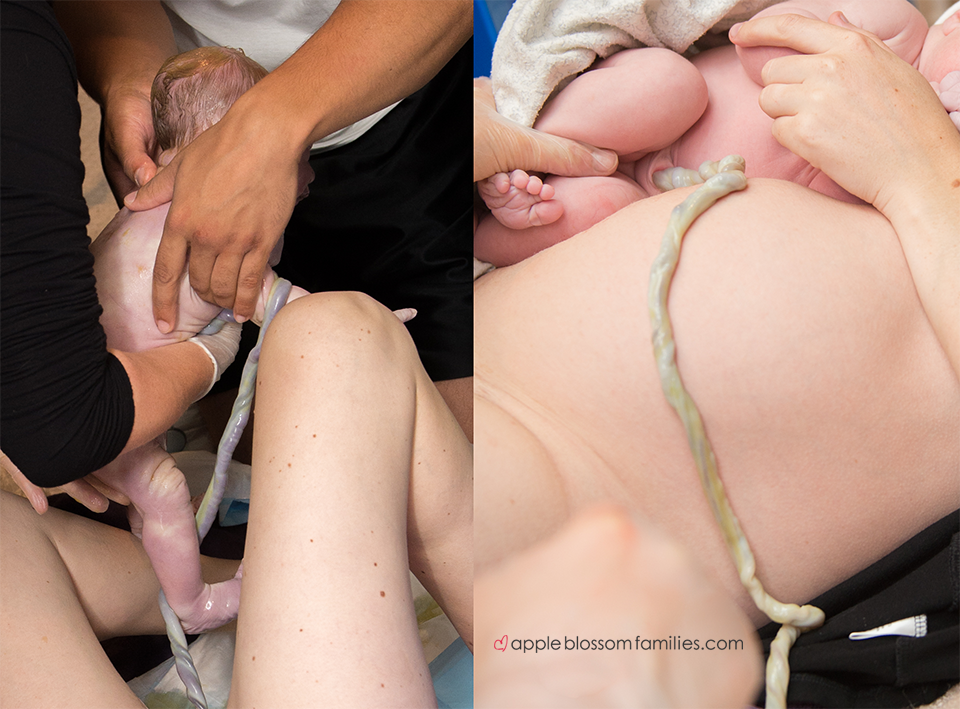
I asked my favourite local midwife to share her wisdom about waiting to cut the cord, this is what she said:
“I have recently started waiting until after the placenta has birthed to clamp and cut the umbilical cord. This ensures immediate skin to skin, and initiation of breastfeeding, which facilitates placental delivery by increasing oxytocin levels. It also decreases unnecessary separation of mom and baby by well meaning care providers and family members, often suggesting someone else hold the baby while the placenta is born. It also ensures a full placental transfusion, increasing baby’s iron and iron stores for the first six months of life! I have been able to do this during both active and expectant management of third stage with no harm to mom or baby.” – Dawn Henderson, RM
Here are a few more great cord images to hopefully inspire you to wait to clamp your baby’s cord.
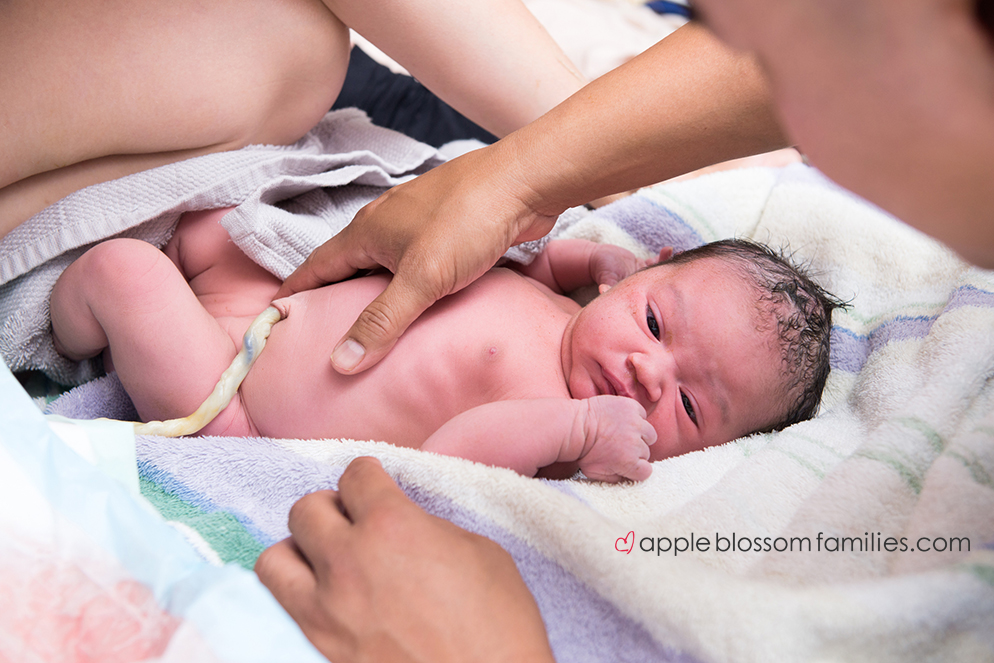
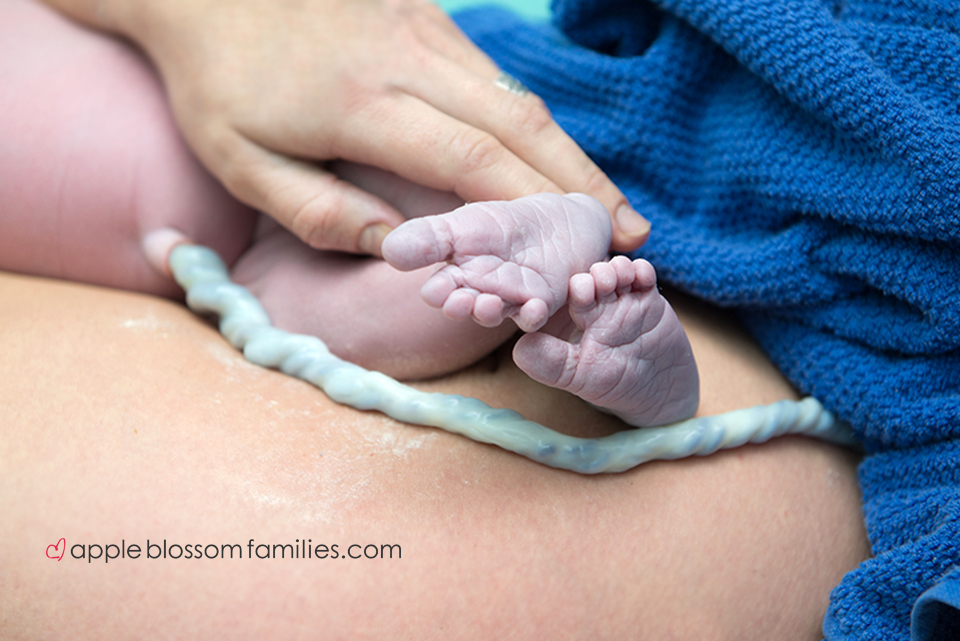
The placenta being birthed with the cord still attached to the baby.
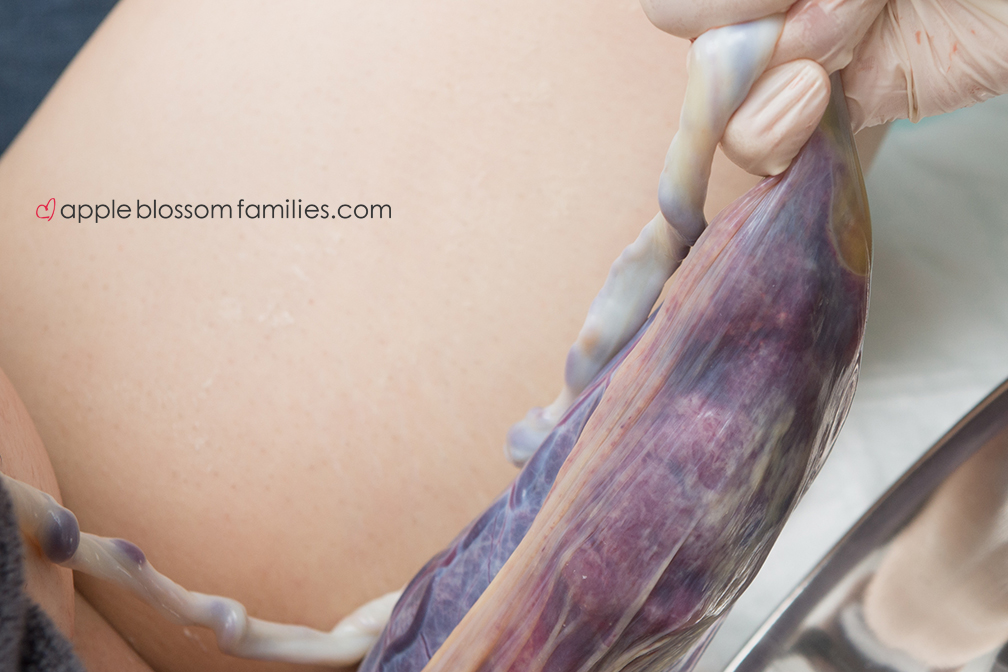
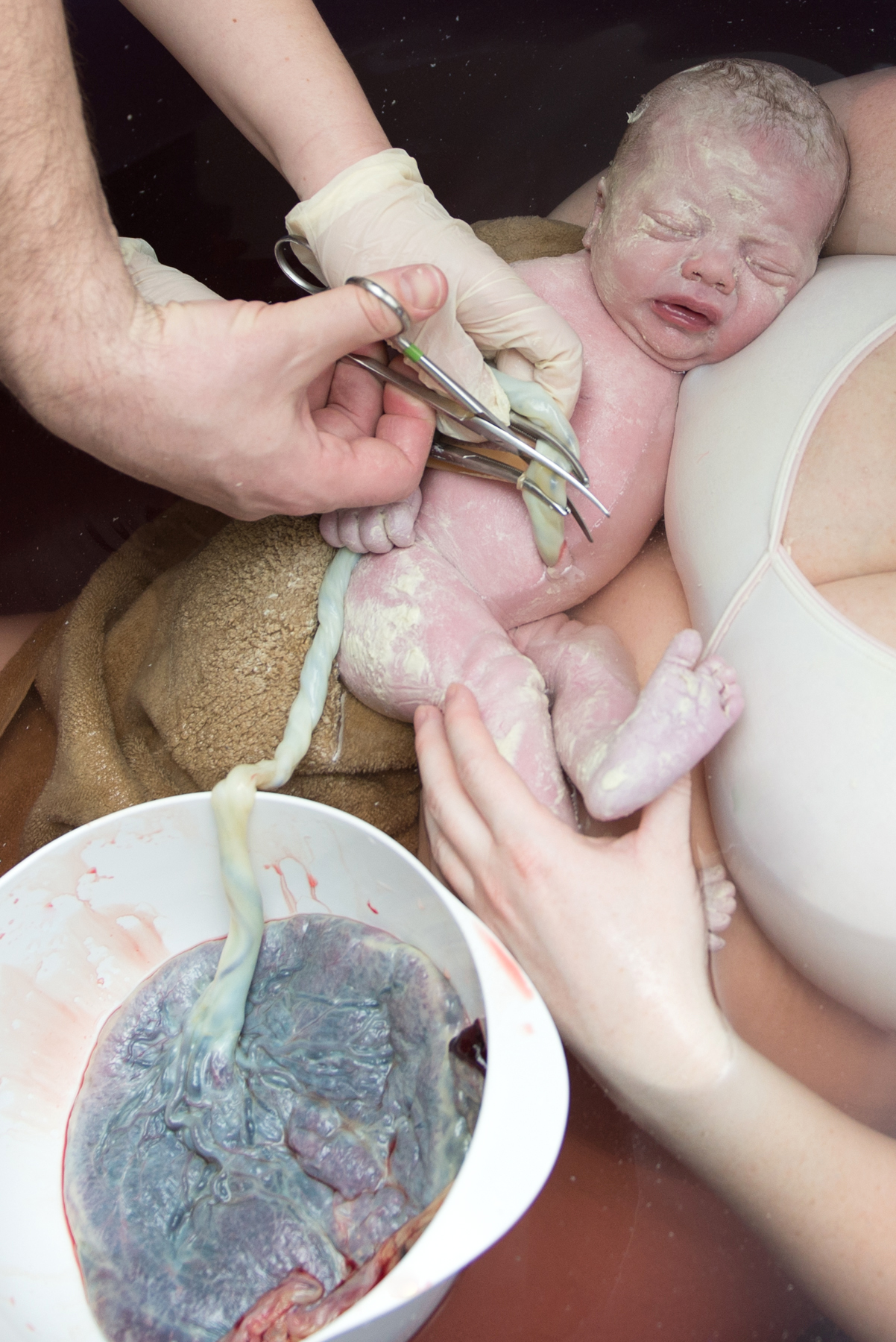
Here is some delayed cord clamping during a ceasarean. The doctor waited 2 minutes before cutting the cord, normally it is done immediately.
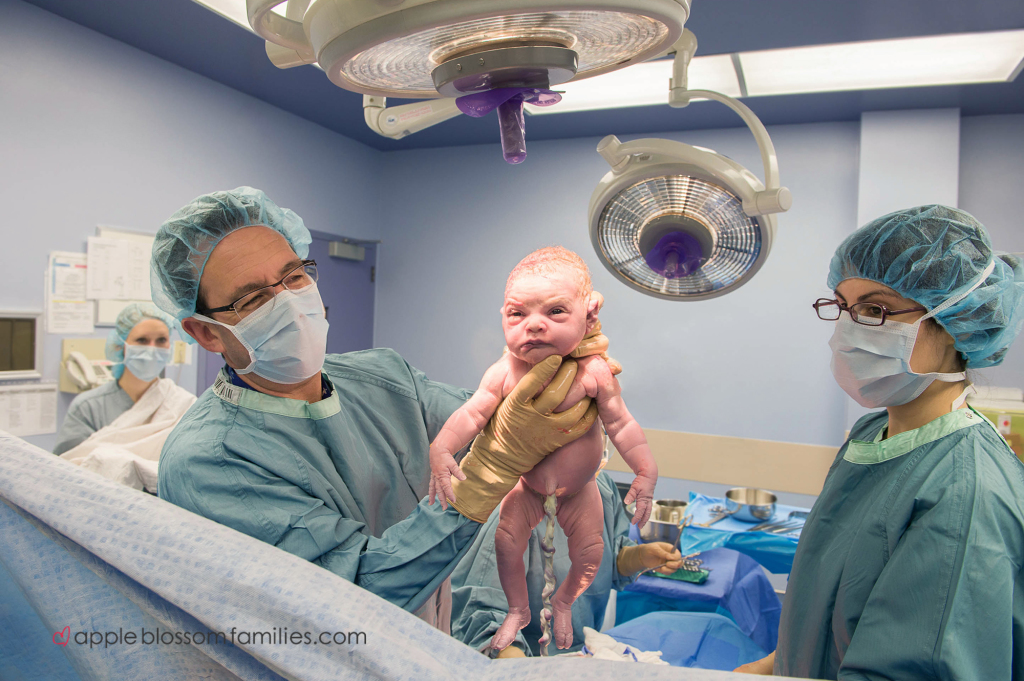
The other side….
A cord being clamped just under 2 minutes post birth, after a vaginal birth.
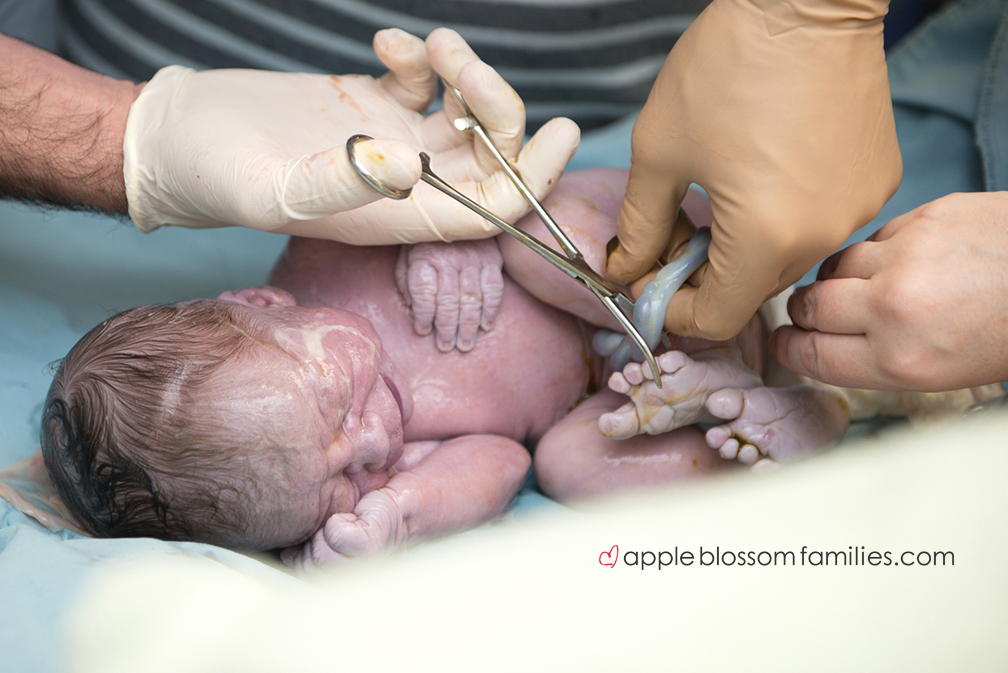
A cord that was clamped and cut before the transfusion finished.

Here the care provider is getting blood from the placenta 3 minutes past birth. (The placenta is still attached to the mothers uterus but the baby has been detached.)
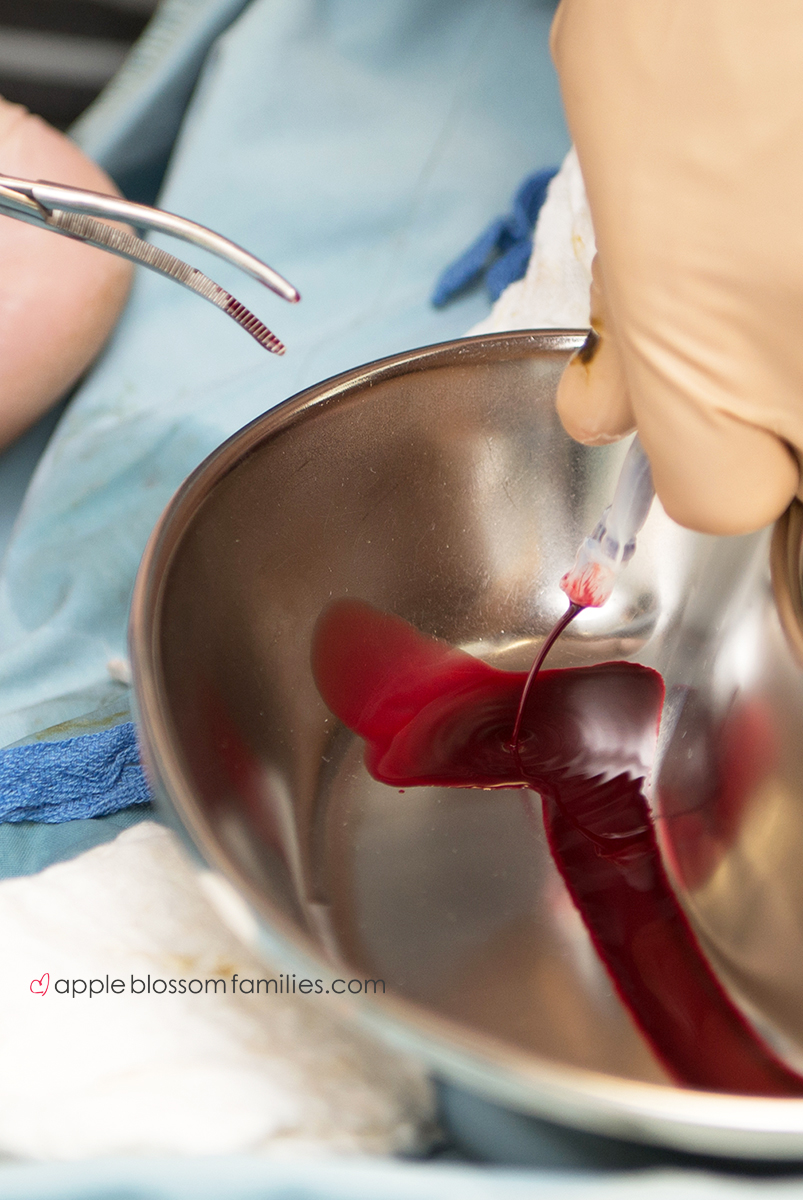
This placenta stopped me in my tracks with all of it’s beauty. I could get lost in this image for longer then one should be comfortable with staring at a blood filled organ. It is an amazingly intricate piece of art. Natures built in resuscitation tool.

OK and this one too. This is the maternal side. This was the placenta of a baby born on Valentines day.

If you’re still questioning my doula-science, here is a video of a doctor in the USA who is promoting other medical professionals to keep the cord attached by testing a resuscitation board to be used close to mom so they do not have to cut the cord to help baby breathe if needed. (Something many midwives have been doing for years. I am happy the doctors are catching on.)
Here is a youtube video with Penny Simkin showing you the mechanics of delayed cord clamping and why it is important.
I beg you to think about it for a moment and when talking with your care providers about the third stage, request the cord cutting to be done at a time that you feel makes sense for your family, it could be 5 min, 10 min, before you push your placenta out or after your placenta is birthed. You can always choose to have it cut earlier if you feel it is a nuisance. If you ask for delayed cord clamping most care providers only wait 2 minutes. So if you want the magic of nature to work for you and your baby you might need to speak up.
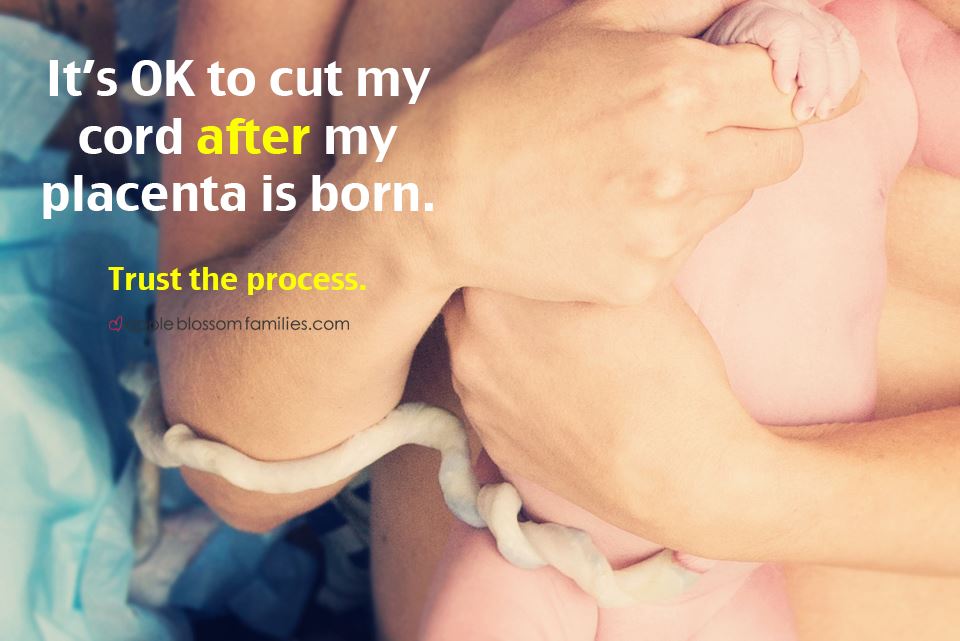
I have a dream that care providers will all start to leave the cord alone until after the placenta is out. I challenge every midwife and/or doctor who is reading this post, to do it at least once in the next calendar year. Even if it is just to bear witness to the way nature intended birth to be. 🙂
Want to read more interesting blog posts. You can learn all about what it looks like when a baby enters the world here.
Morag Hastings is a Doula and Birth Photographer located in Vancouver, BC Canada. Come check out more of her work on her facebook page at www.fb.com/vancouverbirthdoula or feel free to email me at moraghastings@gmail.com I would love to hear from you.

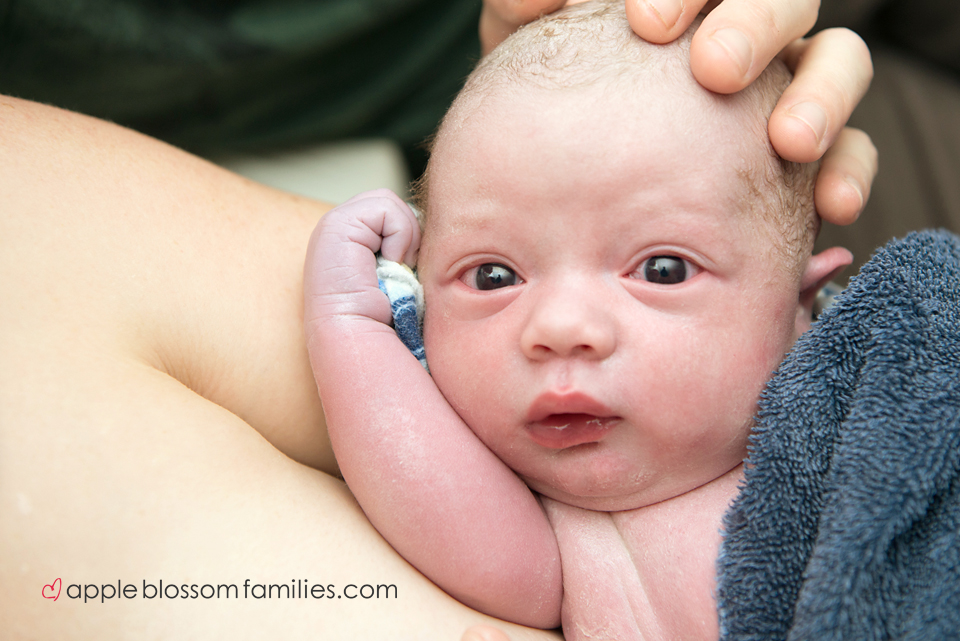
Loved the article and the pictures! Just wonering what you have noticed in regard to maternal bleeding when the cord clamping is delayed and the placenta detaches at its own pace? My guess is that there is less need or those incrdibly painful IM-oxcytocin shots because mothers don’t hemorage as badly! I would love to hear what your experience has shown.
I personally have not seen an increase in postpartum hemorrhaging but I am lucky to attend lots of low intervention births.
Thank you for the information and documenting the process so beautifully.
I am a certified nurse midwife and attend births in the hospital. Our routine is to not cut or clamp the cord until it is empty and pulsing has ceased, we pay no attention to the clock. I had one recently that was very interesting. The mother birthed the placenta and the cord continued to pulsate. We waited until the pulsating stopped and the cord was empty before we clamped and cut it. So intriguing. It was the first time I had ever had that happen.